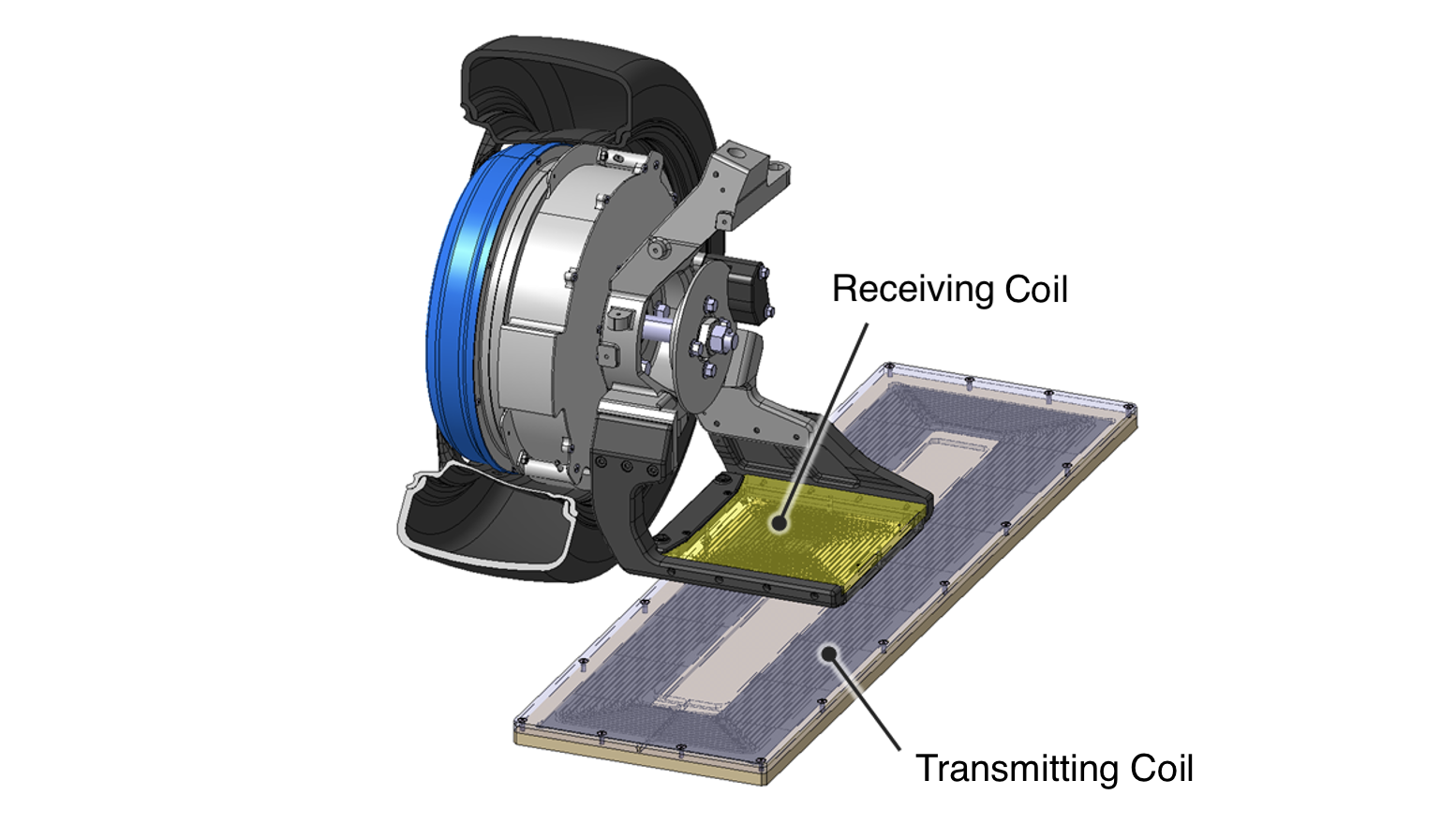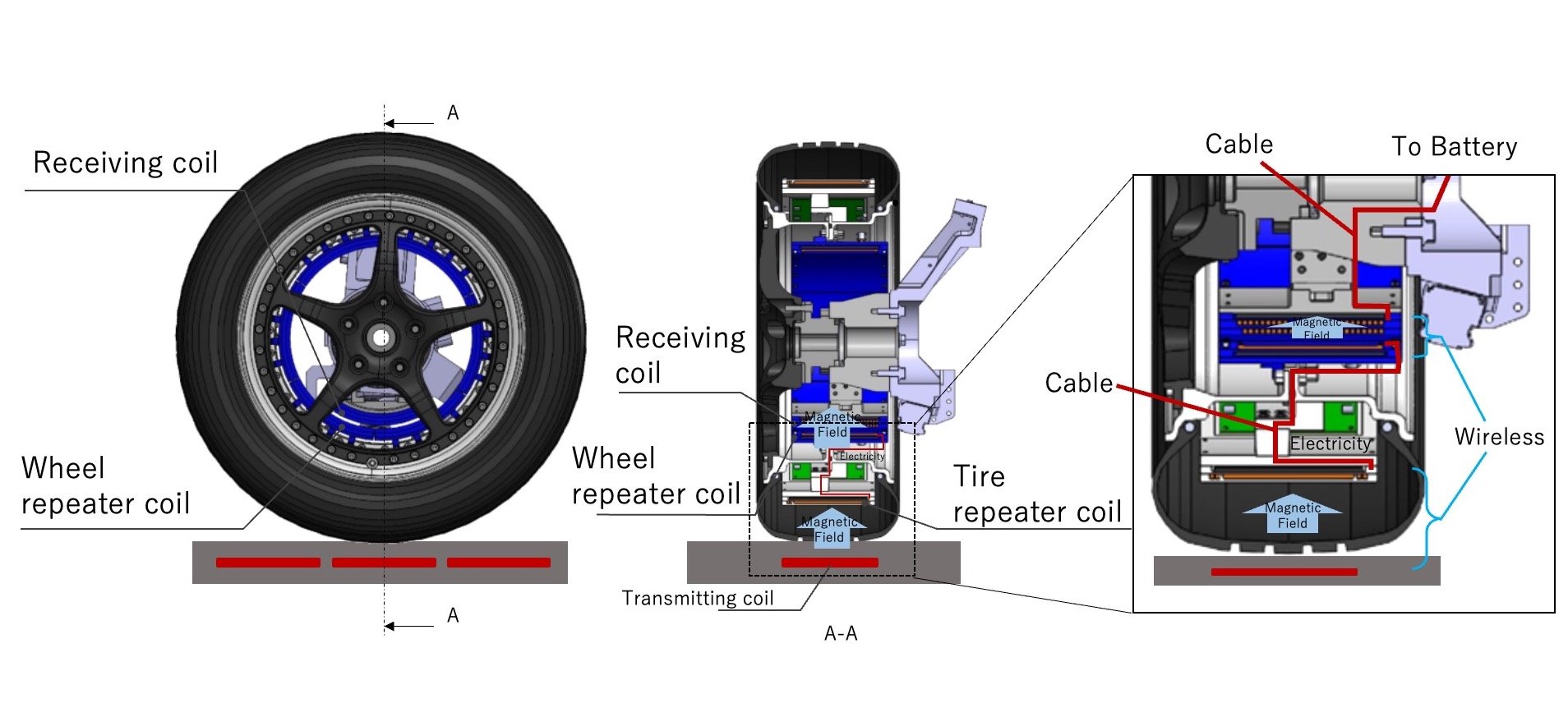In-Tire Charging Technology is Successfully Developed [Corporate Sponsored Research Program SDGs by Open Innovation in EV Technology]
- Headline
- Press Release
OVERVIEW
In the Corporate Sponsored Research Program, "SDGs by Open Innovation in EV Technology" *1, the Graduate School of Frontier Sciences, in association with DENSO CORPORATION, NSK Ltd., Bridgestone Corporation, and ROHM., CO., LTD., succeeded in developing the unpreceded power charging system for electric vehicles to improve the dynamic wireless power transfer technology. This is a system that sends the power to the tires and relays it to a vehicle. (See Figure 1.)
Figure 1: The In-Tire Charging System
Left: Experimental Vehicle Right: Power receiver in a tire
*1 Corporate Sponsored Research Program is designed for educational institutions, including graduate and undergraduate schools, to contribute to solving public issues in collaboration with external institutions, such as private corporations, except for national research institutes, using the fund to receive them in the project.
DETAILS
Research Outcome
■Dynamic Wireless Power Transfer System
For sustainable automobiles, the development of electric vehicles (EVs) has been promoted. The group researches a dynamic wireless power transfer system to solve the problem that current EVs and their manufacturing process have, including short driving range, high car price due to the need for a large number of battery cells, greenhouse gas emissions by producing batteries, and load on the systems due to charging.
Figure 2: An example of a dynamic wireless power transfer system
■In-Tire Charging System
Shortening the gap between the transmitter coil and the receiver coil is necessary for a dynamic wireless power transfer system because the system uses the magnetic field to send power. To rectify the problem, the group focused on tires, the only surfaces of a car that touch the ground, and developed an in-tire charging system prototype. They installed coils in the tire and wheel to relay the electricity through the magnetic field. The electricity is sent to these Repeater Coils and passed to the receiver coil attached to the hub. The Repeater Coils in the tire and wheel are wired in order to transmit the power even in a metal wheel. Consequently, the gap between the transmitter coil and receiver coil is shortened, increasing the efficiency and the amount of power transmission compared to the conventional systems.
Figure 3: In-Tire Charging System
(Left: Elevation Center: Cross Section Right: Enlarged Section)
Figure 4: In-Tire Charging System
(Left: Before equipped with the tire Center: After equipped with the tire Right: After equipped with the chassis)
NEXT GOAL
This CSR project will continue researching and developing the in-tire charging system and various advanced EV technology to achieve the SDGs. The project group will initiate EV drive systems development as the next goal.
The scale model of the developed system will be showcased at the exhibition that will be held with the symposium organized by the Electric Power Technology Board, the Society of Automotive Engineers of Japan, Inc., on February 3, 2023. The professors and engineers involved in the project will offer explanations during the exhibition. All visitors will be welcomed to the exhibition without registration. (Please note that advance registration is required to participate in the symposium. )
The Symposium of the Electric Power Technology Board, the Society of Automotive Engineers of Japan, Inc.
https://www.jsae.or.jp/sympo/2022/no8.php
PROJECT LABORATORY
CONTACT
The Graduate School of Frontier Sciences Public Relations Office








